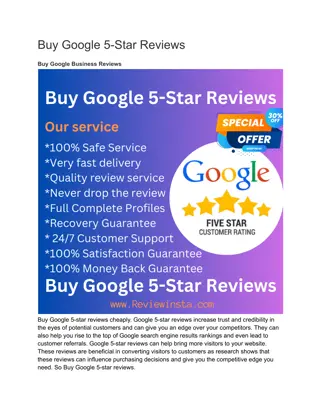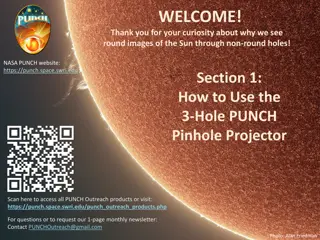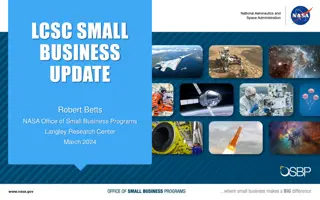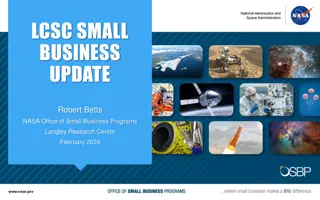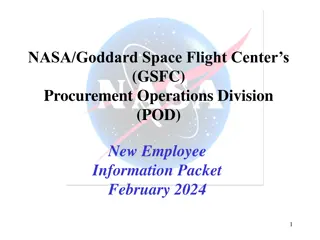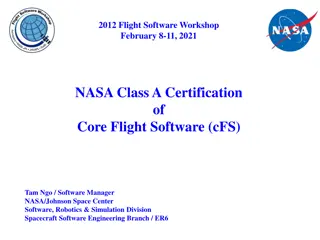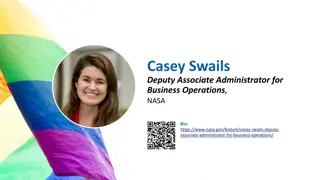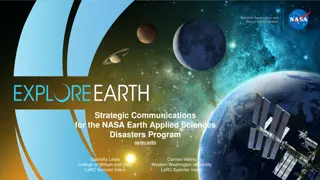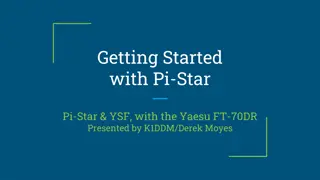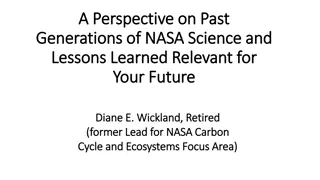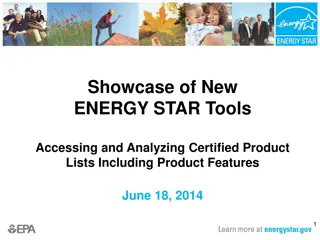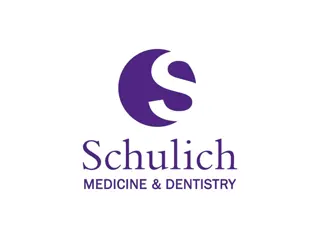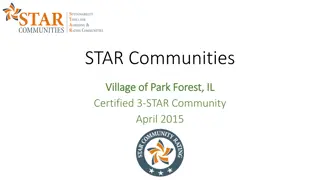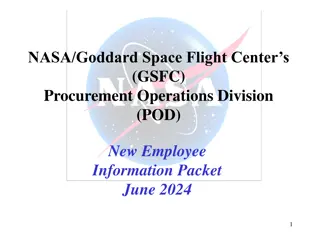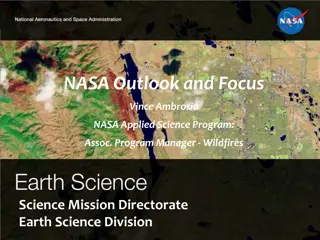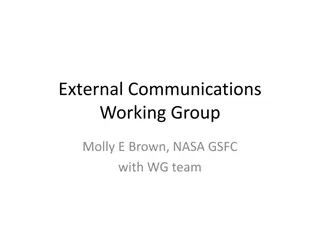NASA Living with a Star Program Analysis Group Overview
Community-based interdisciplinary forum, LPAG, solicits community input for Living with a Star objectives. Executive Committee members, liaison members, and the 2018 and 2019 activities of LPAG are detailed. Strategic Science Areas and Focused Science Topics for ROSES are discussed, highlighting the program's research and development efforts.
Download Presentation

Please find below an Image/Link to download the presentation.
The content on the website is provided AS IS for your information and personal use only. It may not be sold, licensed, or shared on other websites without obtaining consent from the author.If you encounter any issues during the download, it is possible that the publisher has removed the file from their server.
You are allowed to download the files provided on this website for personal or commercial use, subject to the condition that they are used lawfully. All files are the property of their respective owners.
The content on the website is provided AS IS for your information and personal use only. It may not be sold, licensed, or shared on other websites without obtaining consent from the author.
E N D
Presentation Transcript
NASA Living with a Star Program Analysis Group (LPAG) LPAG: Community-based interdisciplinary forum for soliciting and coordinating community analysis and input for Living with a Star objectives and their implications for architecture planning and activity prioritization and for future exploration. https://lwstrt.gsfc.nasa.gov/lpag Executive Committee (EC) Co-Chairs: Anthea Coster, MIT Haystack Observatory Mark Linton, Naval Research Laboratory EC Members: Joe Borovsky, Space Science Institute Richard Collins, University of Alaska Seebany Datta-Barua, Illinois Institute of Technology Matina Gkioulidou, Applied Physics Lab Fan Guo, Los Alamos National Laboratory Jorg-Micha Jahn, Southwest Research Institute Enrico Landi, University of Michigan John Leibacher, National Solar Observatory Sabrina Savage, NASA Marshall Brian Walsh, Boston University 1
Living with a Star LPAG, continued LWS Program Ex Officio: Jeff Morrill, LWS Program Scientist, NASA Headquarters Simon Plunkett, LWS Science Lead, NASA Headquarters Shing Fung, LWS Website Manager, NASA Goddard Liaison Members: Charles N. Arge, NASA Goddard Barbara Giles, NASA Goddard Terry Onsager, National Oceanographic and Atmospheric Administration Vyacheslav Lukin, National Science Foundation Michael Wiltberger, National Science Foundation Ghee Fry, NASA Marshall Ekaterina M. Verner, NASA Headquarters James Spann, NASA Headquarters Janet Kozyra, NASA Headquarters Maria Kuznetsova, NASA Goddard 2
2018 Review: Development of LWS Focused Science Topics Solicited community input to TR&T science topics (5/7/2018 7/2/2018). 46 distinct community inputs submitted. July-October 2018: Executive Committee drafted topics, solicited community feedback, then finalized topics, for a total of 20 draft FSTs, for 2018 LPAG EC report to NASA HQ. NASA HQ used this input to develop four FSTs for ROSES 2019 (due February of 2020): The Variable Radiation Environment in the Dynamical Solar and Heliospheric System Fast Reconnection Onset Magnetospheric and Ionospheric Processes Responsible for Rapid Geomagnetic Changes Causes and Consequences of Hemispherical Asymmetries in the Magnetosphere Ionosphere Thermosphere System 16 draft topics remain as input for NASA HQ development of ROSES 2020 FSTs. 3
2019 LPAG Activity: Revisit Strategic Science Areas Developed in 2014 Review: Strategic Science Areas (SSAs) for LWS Targeted Research and Technology (TR&T) program articulated in the LWS Ten Year Vision. SSAs are long-term targeted areas of system science to guide LWS activities. Physics Based Understanding to Enable Forecasting of SSA-0: Solar electromagnetic, energetic particle, and plasma outputs driving the solar system environment and inputs to Earth s atmosphere SSA-1: Geomagnetic Variability SSA-2: Satellite Drag SSA-3: Solar Energetic Particles SSA-4: Total Electron Content (TEC) SSA-5: Ionospheric Scintillation SSA-6: Radiation Environment 4
Reexamining Strategic Science Areas At April 22-24 meeting, LPAG Executive Committee reexamined SSAs, keeping in mind The overall Living with a Star goals The ways in which these SSAs are now used by the community to develop new draft Focused Science Topics The ways in which the LWS program can complement the Space Weather Action Plan and NASA s new Space Weather Science and Applications (SWxSA) program 5
Reexamining Strategic Science Areas Based on this reexamination, LPAG EC expanded, reordered, and refocused the SSAs June 1 July 14, 2019: draft SSAs released to community for feedback. 29 community inputs submitted. These drafts and the community comments on them are archived at LPAG website: https://lwstrt.gsfc.nasa.gov/lpag Town halls held, garnering additional community input, at: TESS, CEDAR, GEM, and SHINE (though SHINE was after July 14 deadline). LPAG EC meeting July 15-17: EC incorporated community feedback into revised SSAs. One SSA (IX: Solar Impacts on Climate) was then opened to the community for comment for Oct 1 - Nov 15, as it was added after original comment period. 6 inputs submitted by community, incorporated into SSA-IX by LPAG EC. LPAG EC 2019 report to be submitted to NASA by end of December. 6
Strategic Science Areas SSA-I: Origins and Variability of Global Solar Processes Key Elements: Solar Cycle, Dynamo, Irradiance, Solar Wind (revised from original SSA-0, Solar Electromagnetic, Energetic Particle, and Plasma Outputs) SSA-II: Solar Eruptive and Transient Heliospheric Phenomena Key Elements: Flares, Coronal Mass Ejections, Corotating Interaction Regions (extracted from numerous original SSAs) SSA-III: Acceleration and Transport of Energetic Particles in the Heliosphere Key Elements: Energetic Particle Production, Particle Transport, Shocks, Seed Particles, Magnetic Connectivity (revised from original SSA-3, Solar Energetic Particle Forecasting) 7
Strategic Science Areas SSA-IV: Variability of the Geomagnetic Environment Key Elements: Geomagnetically Induced Currents (GIC), Substorms, Geomagnetic Storms (revised from original SSA-1, Geomagnetic Variability Forecasting) SSA-V: Dynamics of the Global Ionosphere and Plasmasphere Key Elements: Electron Density Profile, Total Electron Content, Storm Time Dynamics, Traveling Ionospheric Disturbances, Plasmasphere Refilling (revised from original SSA-4, TEC Forecasting) SSA-VI: Ionospheric Irregularities Key Elements: Plasma Instabilities, Radio Wave Propagation, Scintillation, Polar Cap Absorption (revised from original SSA-5, Ionospheric Scintillation Forecasting) 8
Strategic Science Areas SSA-VII: Composition and Energetics of the Upper Neutral Atmosphere Key Elements: Atmospheric Drag, Heating and Cooling, Waves and Tides, Composition (revised from original SSA-2, Satellite Drag Forecasting) SSA-VIII: Radiation and Particle Environment from Near Earth to Deep Space Key Elements: Radiation Damage, Human Exposure, Spacecraft Charging, Radiation Belts, Plasma Sheet, Heliospheric Energetic Particles (revised from original SSA-6, Radiation Environment Forecasting; extended to deep space) 9
Strategic Science Areas SSA-IX: Solar Impacts on Climate Key Elements: Solar Irradiance, Energetic Particle Precipitation, Coupled Chemical and Dynamical Response of Atmosphere, Ozone Layer (revised from original Sun-Climate Theme was formerly separate from SSAs) SSA-X: Stellar Impacts on Planetary Habitability Key Elements: Atmospheric Depletion and Stripping, Magnetospheric Shielding, Stellar Winds, Stellar Activity and Evolution (new topic) 10
2019 LPAG Activity: Discuss Methods for Assessing Progress of FSTs The LPAG Executive Committee held a wide-ranging discussion of possible methods for measuring progress of FST teams in achieving their specific FST goals and for advancing LWS science. The LPAG encourages the community to submit comments on this topic directly to the LPAG EC members. Informal notes of the full discussion were passed on to LWS leads. More formal notes of key ideas will be summarized in the annual report, as follows: 11
Methods for Assessing Progress of FSTs Start of FST Project: Objective and Milestones document to HQ for newly developed Team Plan from Meeting 1, develop measures of success for team. During FST Project: 1+ annual publicly releasable Team Research Highlight for NASA HQ and TR&T website - e.g., team decides at one of two annual meetings what that year s research highlights will be - make this part of annual reporting requirement. Annual team progress report. Detail progress towards measures of success, and updates to objectives and milestones (1-3 pp). At Conclusion of FST Project: Publicly releasable Extended and Brief Summary (see next slide) Exit survey to team members - evaluation of program, team organization Team lead meeting with LWS Program Scientists to discuss program 12
Methods for Assessing Progress of FSTs Extended summary What was accomplished by the FST, both by the individual proposal units, and by the team as a whole? What scientific capabilities were added or improved? What are the next steps for this topic? What challenges and open questions arose which could not be addressed by this FST, and which would therefore be good challenges for future FSTs? What are the remaining gaps that need to be filled? What synergies emerged from the team dynamic? Brief summary (~ 1 page) with bulletized lists of: Research highlights Remaining challenges and open questions Team dynamics 13
Activities for LPAG 2020 LPAG Executive Committee Membership: Sabrina Savage to replace Mark Linton as Co-Chair. Anthea Coster to continue as Co-Chair. Four current members will retire at end of 2019. Dear Colleague Letter (DCL) soliciting new membership to be sent out soon. Co-Chairs will recommend replacements to HDD from responses to DCL. Solicit and develop new set of draft FSTs: Remaining draft FSTs from 2018 LPAG EC report will serve as input for NASA HQ development of ROSES 2020 FSTs. Primary focus for LPAG Executive Committee in 2020 will be solicitation of community input for, and subsequent development of, new draft FSTs for ROSES 2021 and beyond. Assess progress of FST teams: Periodically revisit discussion on assessing progress of FST teams, as NASA implements and tests new ideas. 14
Comments From Heliophysics Advisory Committee (HPAC) on LPAG 2019 Report: Clarify boundaries of SSA-IX Solar Impacts on Climate with respect to climate science traditionally supported by Earth Science Division. Coordinate with Cross-Division programs E.3 Exoplanet Research Program and E.4 Habitable Worlds prior to the permanent inclusion of SSA- X: Stellar Impacts on Planetary Habitability . Review SSA-X after two years to assess community s continued support, participation, and proposal pressure. 15


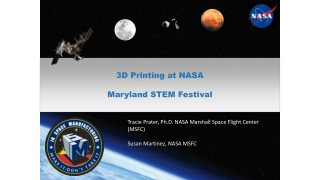
![❤Book⚡[PDF]✔ Doing the Impossible: George E. Mueller and the Management of NASA’](/thumb/21684/book-pdf-doing-the-impossible-george-e-mueller-and-the-management-of-nasa.jpg)

